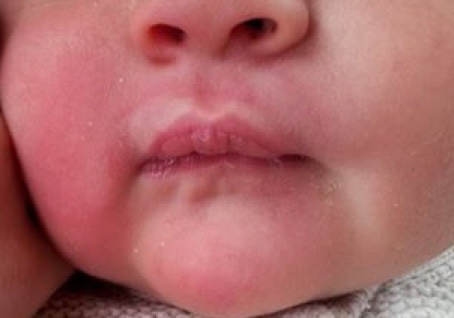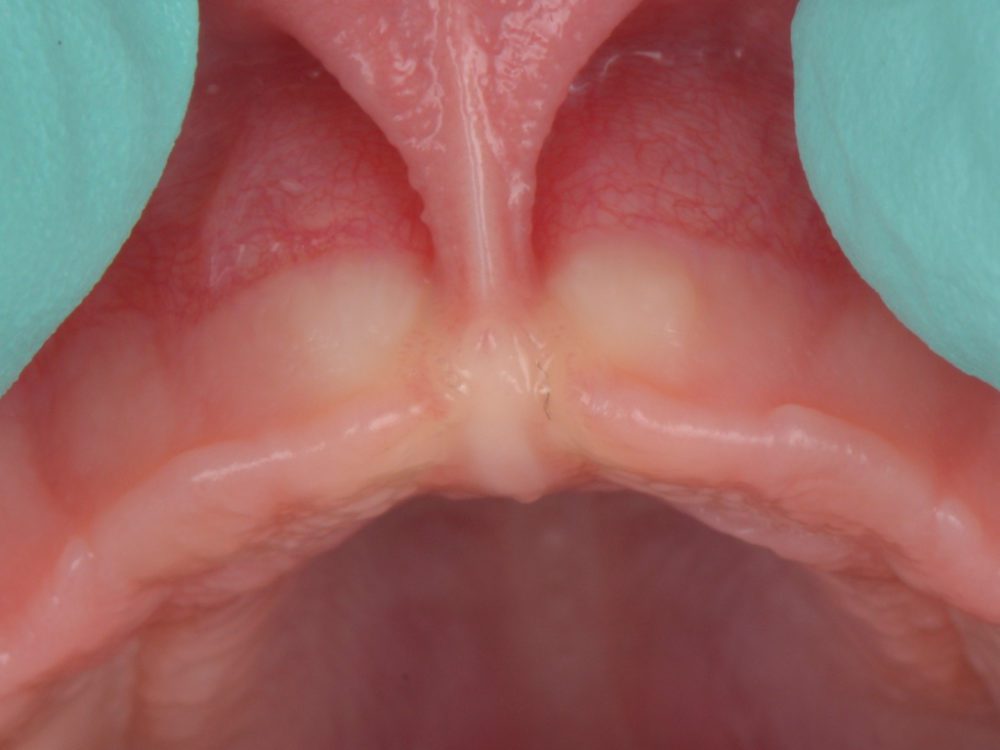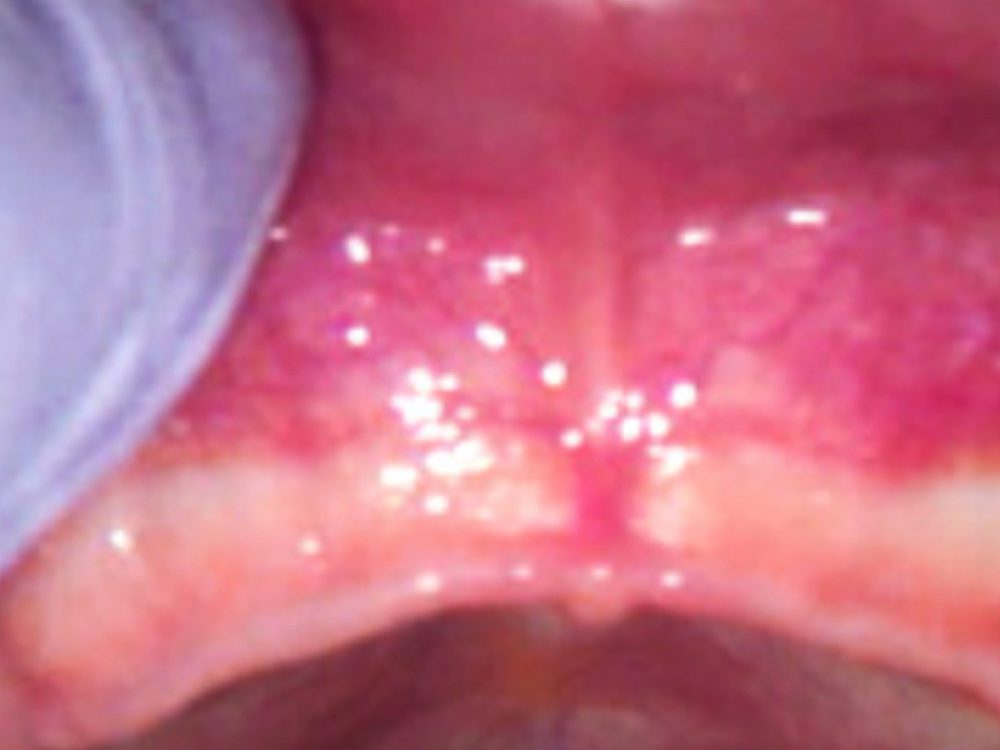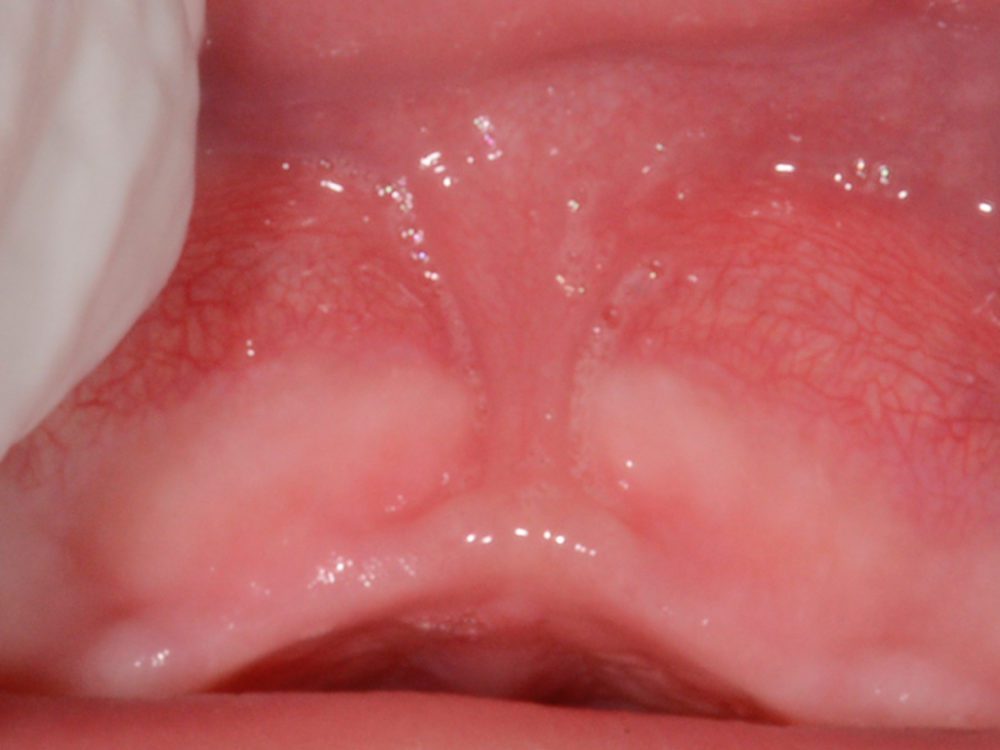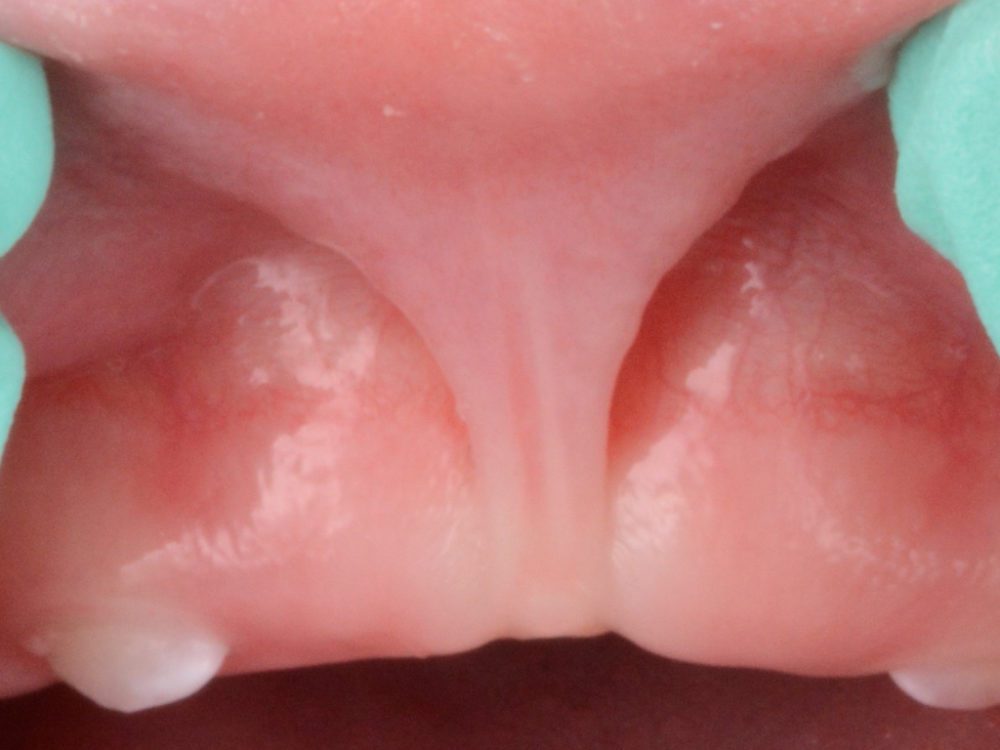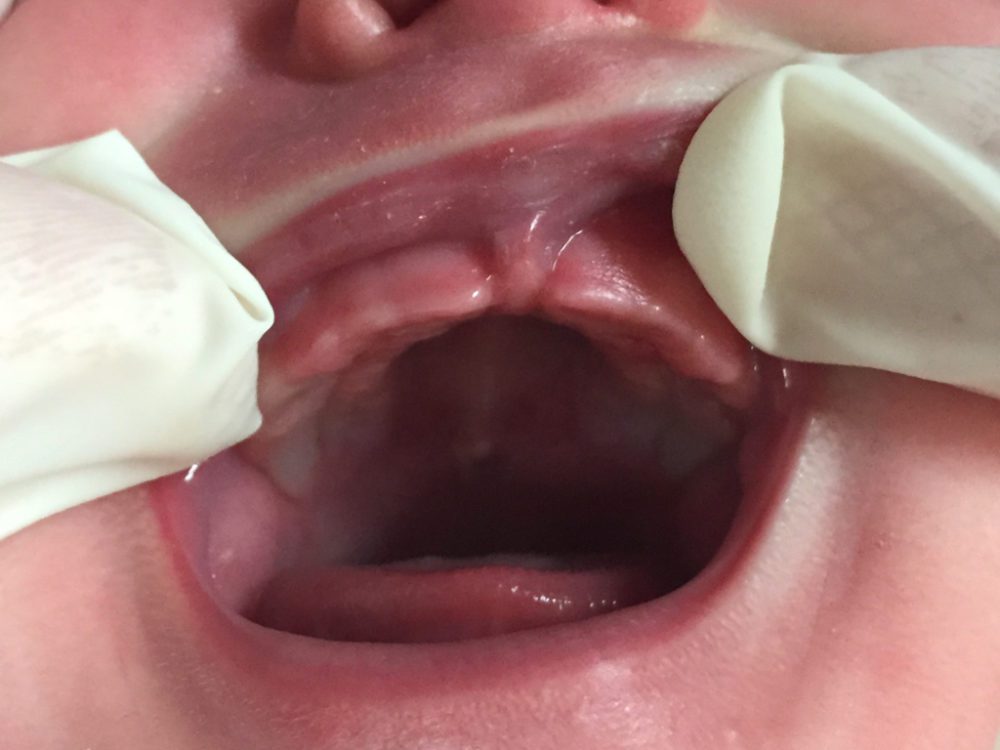Checklist of signs and symptoms of tongue tie and lip tie
- Signs of restricted mobility of the muscles of the tongue and the upper lip:
Due to the tie the tongue can only move the front and sides a bit. The tongue cannot go up and back properly, difficulty latching on, drawing in the nipple deep. While very often at the same time the upper lip cannot flange out over the breast, because the tie pulls it inward. So the baby slides off easily. Resulting in small latch, letting go of nipple. Latching on and drinking difficult or only works with a nipple shield or bottle. Falling asleep at the breast or bottle, frustrated, doesn’t seem to want to drink, doesn’t empty the bottle.
- Signs of compensating due to restricted mobility of the tongue and lip tie:
Tries to hold on to the breast by clenching jaws together. Uses cheek muscles to draw milk. Mother experiencing pain especially at latching on. But not always painful, also just sucking really “hard” or “strong”. Chin quivers from jaw muscles tension. Sucking blisters on lips from friction. This compensating is weary for the baby and especially in compromised growth or premature babies it’s a shame it costs energy. Sometimes babies are called lazy drinkers.
Nipple should come out round, but comes out flattened, with blisters, discoloured and sore. “Raynaud” like symptoms from diminished blood flow to nipple.
- Signs of compromised ability to get sufficient milk:
Due to the baby’s restricted mobility, only suckles at the nipple and hardly at any breast tissue. There is too little milktransfer as a result. The baby draws in the nipple as if sucking in spaghetti, hangs on nipple like a “cliffhanger”, often pulling and moving the head in an attempt to pull out the milk, sometimes using hands to pull the breast in older baby’s, drinking suddenly painful when teeth come.
Baby doesn’t “empty” the breast (or bottle), drinks often to get enough milk. Plugged ducts, overproduction from drinking often, compromised production in the end.
Baby loses weight more than 7% in the first days, getting back to birth weight takes more than 10 days. Growth stagnates after weeks or months when production decreases. Babies don’t always show; they save energy by sleeping long for example. A sign could be very few poop diapers.
Baby only drinks the “easy” milk, during the milk ejection reflex. Drinks short or very long. Only making the chin tug and drinking when MER or giving breast compression or supplementing at the breast.
- Signs of compromised possibility of making a good seal:
Due to the low tongue position, often high palate and the upper lip not flanging out completely over the nipple, bottle or breast, your baby cannot make a good seal and loses suction, you can hear clicking sounds. Also very loud drinking, gulping it down and choking. Complaints of swallowing air.
The swallowed air needs to go somewhere; it goes up or down. Burping, hiccough, spitting, windy, colic. GER or reflux with or without spitting (hidden reflux). In hidden reflux the baby tries to keep the milk down by swallowing again, sometimes forgetting to breath momentarily. During feeding it can be very uncomfortable for the baby and can become restless. It’s difficult to put the baby down to sleep. Parents walk with their baby until symptoms subside. The baby can experience pain from the stomach acid in the oesophagus. GERD. Sometimes medication is given which lowers stomach acid.
Thrush is often confused with tongue tie problems. Although you can see it both at the same time. The tongue may have debris in the papilla (from day of birth) due to the fact that the tongue hardly touches the palate so it doesn’t “rub clean”. Pinching and stabbing pain can be from thrush or compensating behaviour from tongue and lip tie. In tongue tie you can see white debris on the posterior part of the tongue behind the tongue tie, the front of the tongue rubs clean against the inside of the upper maxilla. Thrush is a “pearl white” shine or white plaques on the inside of the lips and on the mucous membranes of the inside of the mouth.
*Note that not all symptoms have to be present at the same time.
